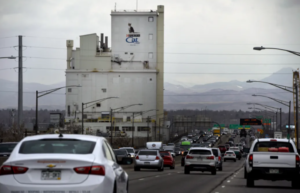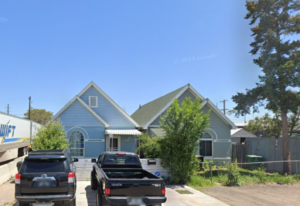 Traveling along I-70 through Denver is a bit of a sensory adventure. To the west, you’ve got the majesty of the Rockies; to the east, the sweeping openness of the Great Plains. The highway winds through a patchwork of neighborhoods—diverse, storied, and full of character, reflecting the deep history of the Denver metro area.
Traveling along I-70 through Denver is a bit of a sensory adventure. To the west, you’ve got the majesty of the Rockies; to the east, the sweeping openness of the Great Plains. The highway winds through a patchwork of neighborhoods—diverse, storied, and full of character, reflecting the deep history of the Denver metro area.
Like any drive through a big city, some parts are… less than charming. If you’ve ever cruised this stretch of I-70, you probably know what I’m talking about. There’s a spot near the Steele Street exit that hits you right in the nose—and you’ll never forget it. That’s where the Purina dog food plant sits, nestled right next to the highway. I’ve had people jolt awake from a dead sleep just as we passed it, their noses wrinkling before their eyes even opened. It’s one of those weird little details that Denverites just accept as part of the deal.
Now, when you’re just driving by, that quirk can be kind of funny. But if you live in the neighborhood? That’s a different story.
Back in the late ’60s, one of my grandmothers lived right across the street from that plant. And I don’t mean “down the block” or “around the corner”—I mean a short pitching wedge away. I could’ve thrown a ball and hit the place. I stayed with her from time to time, and those visits are burned into my memory.
She taught me how to play cards—everything from solitaire to poker—and she slipped a few new vocabulary words into my growing lexicon, too. Her house was a time capsule: stuffy, crammed with knick-knacks and relics from another era. I see similar pieces in antique stores now, and they always remind me of her. I still have one thing she gave me—a small porcelain shoe. It looked ancient to me back then, and somehow, out of everything from my childhood, that’s one of the few things I held onto.
Years later, when my daughter was in high school, I took her by the old house. I wanted her to see a bit of my childhood firsthand. She looked around and said, “Wow, this place is industrial.” She asked when that happened, and I told her it was always like that—even when I was a kid. The row of houses looked like they were from the 1930s, and maybe once they were quite nice. But the area had swallowed them up. They looked rough now, and maybe they always had. I just hadn’t noticed back then.
We passed a junkyard nearby, and I pointed it out to her. “That’s where I used to play when I stayed with Grandma,” I said. She blinked and asked, “Was it a park or something back then?”
“Nope,” I said. “Still a junkyard. Might even be a car or two in there that I played on thirty years ago.”
 Unfortunately, when I was in high school, my grandmother fell while going down to the cellar out back. She hit her head on the edge of an old bumper that was stored down there. It was a bad injury—what we’d now call a traumatic brain injury. After that, she lived in a nursing home in Lakewood, not far from where we were living at the time. I’d visit her occasionally. I’m not sure she ever really knew who I was, but I liked to believe she did. I’d sit and play solitaire on the table in her room, just like I had at her house.
Unfortunately, when I was in high school, my grandmother fell while going down to the cellar out back. She hit her head on the edge of an old bumper that was stored down there. It was a bad injury—what we’d now call a traumatic brain injury. After that, she lived in a nursing home in Lakewood, not far from where we were living at the time. I’d visit her occasionally. I’m not sure she ever really knew who I was, but I liked to believe she did. I’d sit and play solitaire on the table in her room, just like I had at her house.
I’ve driven past that Purina plant hundreds of times since I was a kid. Most people wrinkle their noses and speed up. Me? I just smile. Yeah, it stinks—but for me, it’s the smell of memories. It may be foul, but it’s also kind of wonderful.
Edited for clarity using AI – R Mills
